|
TennisOne Lessons
Acquiring Essential Movement Skills for Tennis
by
There are many ways to move. Skipping, jumping, running, side-stepping, turning, evading and stop-and-start are all movement skills. However, for tennis there are specific skills that must be acquired for optimum results. Recovery from a wide backhand.
Instinctive. When a player runs at a high speed for a wide ball to the backhand, the player may not be able to stop when reaching the ball. After the ball has been hit, the player’s momentum will force the player to take one or more steps away from the court. Of course this makes it difficult to recover and get into position for the next shot.
Acquired skill. A more economical and efficient way to recover would be to quickly, at the completion of the stroke, bring the right foot up behind the left foot and push off with the right foot.
This is a more efficient way, because the player is closer inside the court and can push off from the right foot to recover back onto the court. After hitting a ball, the player must recover Instinctive. The instinctive skill is to side-shuffle or side-step. This is perfectly correct when the distance to cover is not too great. However if the player was pulled wide from the court, side shuffles will not be quick enough, and the player will now be out of position, allowing the opponent to go on the attack Acquired skill. Every player must learn the skill of using cross over steps while recovering. These are basically running steps taken to the side while the player is still facing the opponent so as to anticipate the next shot.
Recovering after a passing shot
In this scenario, the player has made a weak cross court return; the opponent hits a deep ball down the line, comes in, and sets up for a volley. The player decides to hit a passing shot down the line. What are the best movement options in anticipation of the opponent’s volley?
Instinctive. The instinct is to run, trying to recover to the middle of the court. Now let’s go through the percentages. Firstly, the opponent can hit the ball down the line while the player is still moving to get to the center of the court - an obvious winner for the opponent. Score 0 - 1. The opponent can also play a drop shot down the line. Score 0 - 2. The opponent can make a short angle, cross court volley. Score 0 - 3. The opponent can make an unreachable, cross court winning volley. Score 0 - 4. The player can get to a cross court volley when the opponent does not make a firm shot. Score 1 - 4. Not a very good percentage! So just by acquiring a new tactical movement skill, the percentages have shifted from 1 - 4 to 3 - 2 for the player. You have to like those odds better.
Dennis Van der Meer and his staff can be reached in the USA by phoning 1-800-845-6138 or faxing (843) 785-7032. From outside the United States, dial 001-843-785-8388 and fax 001-843-785-7032. Send E-Mail to tennis@vandermeertennis.com or stop by the web site: www.vandermeertennis.com |
|||||||||



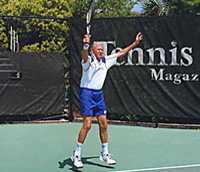
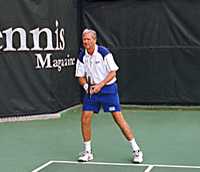
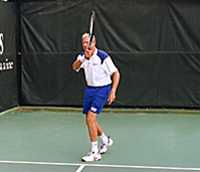
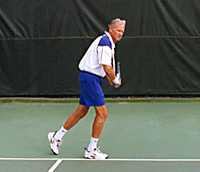
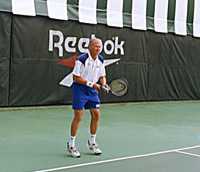 to the center of the opponent’s possible angle of return to be ready for the next shot.
to the center of the opponent’s possible angle of return to be ready for the next shot. 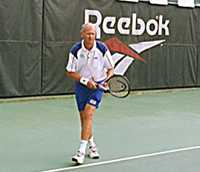 A third possibility when the player is pulled way off the court is just to run as fast as possible towards the correct recovery spot but to come to a stop and take a short split step just as the opponent is about to hit the ball. In this instance, though the player has not reached the ideal recovery position, it will give the player a chance to take off for the opponent’s next shot and perhaps still get there in time.
A third possibility when the player is pulled way off the court is just to run as fast as possible towards the correct recovery spot but to come to a stop and take a short split step just as the opponent is about to hit the ball. In this instance, though the player has not reached the ideal recovery position, it will give the player a chance to take off for the opponent’s next shot and perhaps still get there in time. 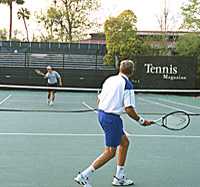
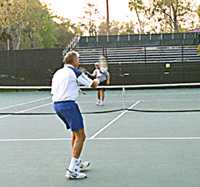
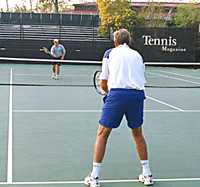
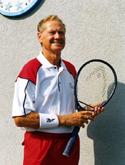 Dennis Van der Meer, voted U.S. Olympic Development Coach of the Year, has taught more people to play and teach tennis than anyone in the history of the game.
Dennis Van der Meer, voted U.S. Olympic Development Coach of the Year, has taught more people to play and teach tennis than anyone in the history of the game.